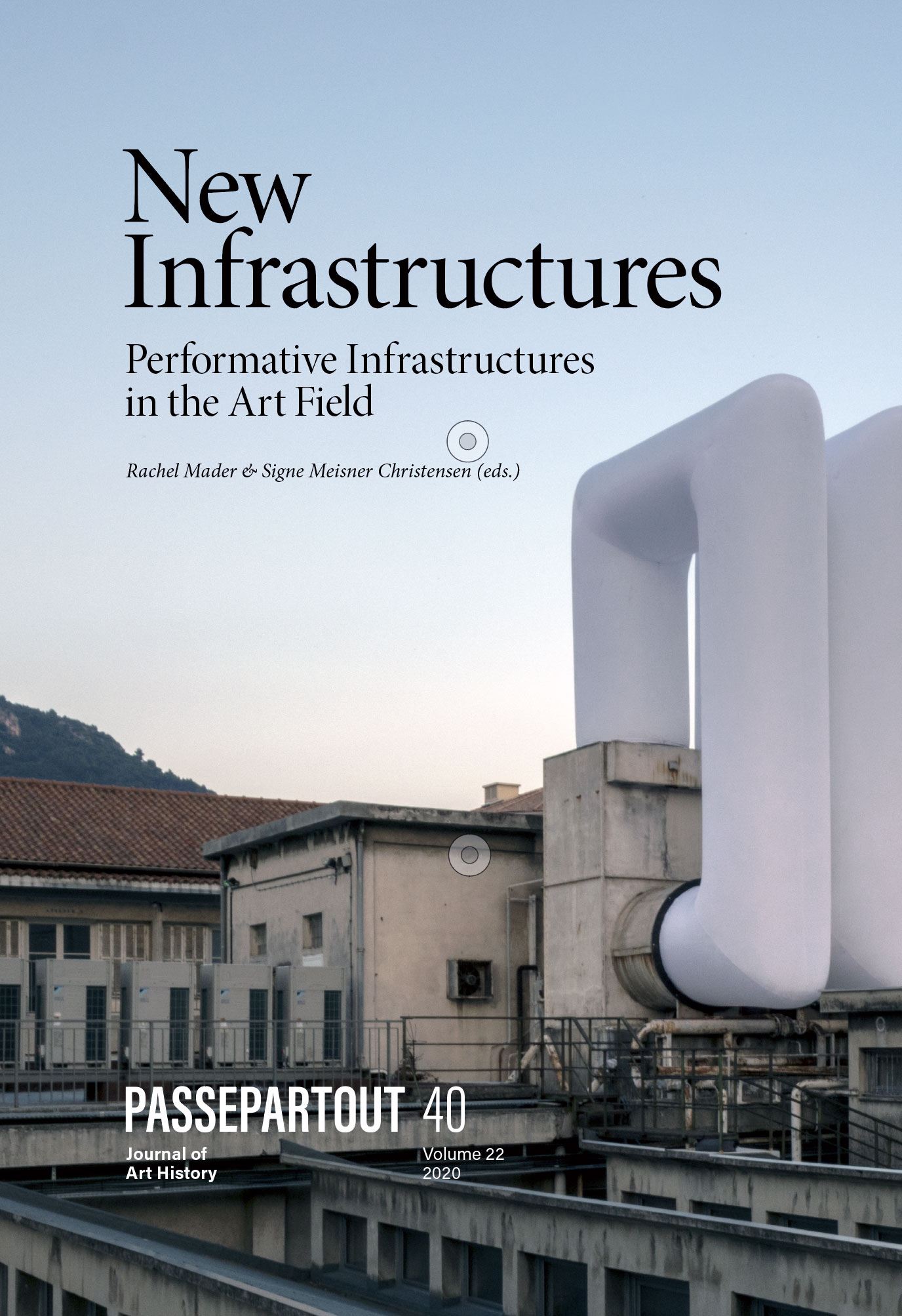Only Temporary. Structures in Flux
Projects by Botschaft e.V. (1990–1996)
Nøgleord:
Temporary, Project, Representation, Instituent practices, Botschaft e.V.Resumé
Botschaft e.V. was an association of up to fifteen people at a time, which in the six years of its existence in East Berlin, from 1990 to 1996, produced a multiplicity of spaces, discourses, media, personal constellations and fields of practice. In 1995, the group was invited to documenta X by its artistic director Catherine David, but refused to participate because in their view it would have narrowed them down as a group of artists. Their agenda, instead, was a wide range of exhibition projects, video and film productions, Internet platforms, self-organized seminars, clubs and political activism, which was constantly developed further through new projects. However, these project-based ways of working have entered into a complex and often complicit relationship with flexible and precarious work contexts that Luc Boltanski and Ève Chiapello characterized as part of a “new spirit of capitalism” (1999). This perspective overlooked and ignored the political dimension of a purely temporary structural fixation. This paper will describe a practice caught between the conflicting processes of institutionalizating and instituent practices as exemplified by Botschaft eV.. A nuanced presentation of their micropolitics shows how their ability to resist questions of representation and temporary power relations allowed them to create possibilities for action.
Referencer
BüroBert (ed.): CopyShop: Kunstpraxis & politische Öffentlichkeit: ein Sampler, Berlin 1993.
von Bismarck, Beatrice et al. (ed.): Grenzbespielungen: visuelle Politik in der Übergangszone, Cologne, 2005.
Boltanski, Luc and Chiapello, Ève,: Der neue Geist des Kapitalismus, Konstanz [i. Orig. 1999] 2003.
Botschaft e.V.: Dromomania. Kult und Ritual der täglichen Fortbewegung. Ein Experiement um Verkehr und Stadtplanung, Berlin, 1990.
Botschaft e.V.: Botschaft Dokumente 1990–1993, Berlin, 1993.
Botschaft e.V. in: Marius Babias (ed.): Im Zentrum der Peripherie. Kunstvermittlung und Vermittlungskunst in den 90er Jahren, Dresden/Basel, 1995, pp. 288–297.
Foucault, Michel: Was ist Kritik?, Berlin [i. Orig. 1978] 1992.
Foucault, Michel: Überwachen und Strafen, Frankfurt am Main [i. Orig. 1975] 1994.
Gerner, Cornelia: “Der Verein als Conférencier. Berlins ‚Kunst-Werke‘ in der Auguststraße haben eine starke Lobby – und viele Kritiker” in: Berliner Zeitung, December 31, 1996.
Group Material: Calendar 1980–1981, in: Group Material und Julie Ault (eds.): Show and Tell: A Chronicle of Group Material, London, 2010, p. 22–23.
Group Material and Julie Ault (eds.): Show and Tell: A Chronicle of Group Material, London, 2010.
Group Material: “On Democracy” in: Dia Art Foundation and Brian Wallis (ed.): Democracy. A project by Group Material, 1990, pp. 1-3.
Höller, Christian: “Fortbestand durch Auflösung. Aussichten interventionistischer Kunst” in: Texte zur Kunst, 5. Jg, No. 20, Nov. 1995, pp. 109–117.
von Klinggräff, Fritz: “Otto-Motor und Ernst-Fall. Dromomania – eine Woche der verkehrten Bewegung” in: taz Berlin, 19.11.1990, p. 23.
Kröger, Merle in: Christoph Keller and Daniel Pflumm: To be continued, 1995, 10 min., Hi-8, private collection Christoph Keller.
Lenhardt, Karin: “Bubble-politics” in Berlin, PROKLA, Nr. 1/28, March 1998, pp.41–65.
Lorey, Isabell: “Demokratie statt Repräsentation. Zur konstituierenden Macht der Besetzungsbewegungen” in: Jens Kastner et al. (ed.): Occupy! Die aktuellen Kämpfe um die Besetzung des Politischen, Wien/Berlin, 2012, pp. 7–49.
Lorey, Isabell: “Non-representationist, Presentist Democracy” Konferenzmanuskript, Autonomy Project Symposium, Van Abbemuseum Eindhoven, 2011, see http://eipcp.net/transversal/1011/lorey/en [accessed October 15, 2018].
van Mengen, Ed in: Christoph Keller and Daniel Pflumm: To be continued, 1995, 10 min., Hi-8, private collection Christoph Keller.
N.N.: “Daimler-Benz: Praktisch verschenkt. Deutschlands größter Konzern sicherte sich in Berlin ein erstklassiges Grundstück zum Schleuderpreis. Nun muß womöglich zugezahlt werden” in: Der Spiegel, No. 11, 1991, p. 134–135.
Nowotny, Stefan: “OBJEKTE, SUBJEKTE, PROJEKTE. Drei Ordnungen des Kunst- und Kulturdispositivs. Die Ordnung der Objekte und die Kontemplation” in: Nowotny und Raunig: Instituierende Praxen: Bruchlinien der Institutionskritik, Wien, 2016, pp. 147–174.
Raunig, Gerald: “Instituierende Paxen, NO. 1, Fliehen, stituieren, Transformieren” in: Stefan Nowotny und Gerald Raunig: Instituierende Praxen: Bruchlinien der Institutionskritik, Wien, 2016, pp. 39–58.
Raunig, Gerald: Kunst und Revolution. Künstlerischer Aktivismus im langen 20. Jahrhundert, Wien 2005.
Walter Robinson and Carlo McCormick: “Slouching Towards Avenue D” in: Art in America, 72. Jg., Nr. 6, 1984, pp. 135–161.
Rollins, Tim: What Was to be Done? in: Group Material und Julie Ault (eds.): Show and Tell: A Chronicle of Group Material, London, 2010, pp. 217–219.
Schroer, Markus: “Bringing space back in – On the relevance of space as a sociological category” in: Jörg Döring and Tristan Thielmann (eds.): Spacial Turn. Das Raumparadigma in den Kultur- und Sozialwissenschaften, Bielefeld, 2008, pp. 125–148.
Wulffen, Thomas: “Die Vergangenheit der Zukunft. Stichworte zur künstlerischen Situation in Berlin” in: Institut für Auslandsbeziehungen e.V. (ed.): Quobo. Kunst in Berlin 1989–1999, Stuttgart. 2000, pp. 24–33.





